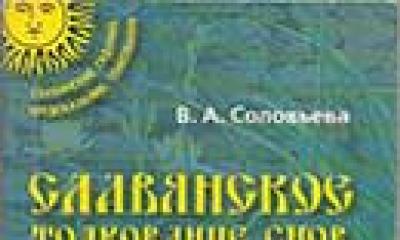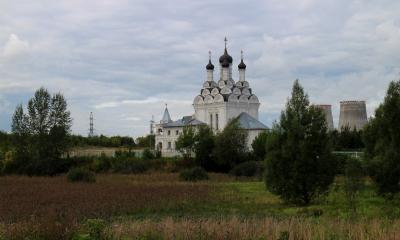The most capable applicants, who have good knowledge and grades in the certificate, choose Moscow State University without hesitation. But it’s not possible to quickly decide on a faculty. The most famous university in our country has many structural divisions. One of them belongs to the field of fundamental physical and chemical engineering - FFFHI MSU.
The emergence of the faculty and the reasons for its opening
The faculty is a fairly young structural unit. He has been conducting his educational activities since 2011. However, in 2011 it was not created from scratch. Its appearance was associated with the transformation of the Faculty of Physics and Chemistry, which has existed since 2006 and trains specialists in the field of chemistry and physics.
The opening of FFFHI is not some ordinary desire of the management staff of Moscow State University. The founding of a new structural unit was provoked by the development of the university, changes in the world, and scientific progress. The Faculty of Fundamental Physical and Chemical Engineering was designed to provide modern
The essence of the new structural unit
The university states that modern engineering faces a specific challenge. It consists in strengthening the technological component of classical natural science education, implementing interdisciplinary training in the field of chemistry, physics, and biology. Moscow State University employees say that those students who study in this structural unit can implement innovative scientific and engineering ideas in practice after graduation.
What is the faculty like in reality? FFFHI MSU really prepares modern specialists. During their studies, students gain knowledge from different fields, learn to combine them and, thanks to this unusual approach, solve certain practical problems. There is an engineering component to the educational process. It is represented by such disciplines as materials science fundamentals of design, industrial and innovation management, etc. Additionally, fundamental university training is provided. It consists of teaching subjects related to mathematics, biology, physics and chemistry.

"Applied mathematics and physics"
FFFHI MSU has 2 departments in its organizational structure. One of them is related to solid state engineering physics. This department offers 1 undergraduate program - “applied mathematics and physics”. The direction is focused on training scientific and scientific-engineering technological personnel.
Graduates find themselves in different areas of life. Some people, after receiving their diploma, engage in research activities, others choose the field of high and knowledge-intensive technologies and try themselves in innovative, design and production activities. Some graduates decide to gain deeper knowledge and enter the department’s master’s program, which has the same name as the bachelor’s program.

"Fundamental and applied chemistry"
The second department of the faculty is associated with engineering chemical physics. It is responsible for training full-fledged specialists (not bachelors) in the program “fundamental and applied chemistry”. The specialty is interesting. During their studies, students study chemical processes occurring in nature or the laboratory, identify general patterns of their occurrence, and look for ways to control these processes.
“Fundamental and Applied Chemistry” (like previous training programs of the Faculty of Physics and Chemistry of Moscow State University) opens several paths in life for students. Students are faced with a choice of what activities to engage in in the future. After graduation you can:
- conduct research work (be a scientist);
- go to the scientific and production sphere (become a specialist in any enterprise related to chemical processes);
- engage in teaching activities (become a teacher).

Information from the Moscow State University Admissions Committee
Aimed at high-quality training. The university does not “stamp” specialists who only have certificates. That is why the number of places (both budget and paid) at the Faculty of Physical and Chemical Engineering is limited. In “applied mathematics and physics” the opportunity to receive a free education is provided to only 15 people. There are slightly more budget places in “fundamental and applied chemistry”. There are 25 of them.
There are very few paid places. There are only 5 of them in both programs. Paid education at FFFHI is not a cheap pleasure. For one academic year, students of the Faculty of Physical and Chemical Engineering contribute a little more than 350 thousand rubles. The price changes slightly every year. You can check this with the Moscow State University Admissions Office.

Entrance exams and passing scores
“Applied mathematics and physics” is a direction in which 4 entrance exams are provided. Applicants take the Russian language, physics and mathematics in the form of the Unified State Exam. An additional test conducted at Moscow State University is a written work in mathematics. In “fundamental and applied chemistry” there are even more exams. Russian language, physics, mathematics and chemistry are required to be taken in the form of the Unified State Exam. Additionally, the university takes chemistry in writing.
The competition and passing grade are quite high indicators. In 2017, 276 applications were submitted for “applied mathematics and physics”. This means that approximately 18 people competed for 1st place. The passing score at FFFHI MSU was 276. 218 people expressed a desire to enroll in “fundamental and applied chemistry”. The competition was 8.72 people for 1st place, and the passing score was 373.

What awaits applicants
Studying at FFFHI is difficult, but interesting. The disciplines are taught by highly qualified specialists, scientists of the Russian Academy of Sciences. In classes, they not only present theoretical material, but also give examples from their own scientific practice. The faculty actively uses modern technologies in educational activities. They make life easier for students - they reduce the classroom load and increase the amount of independent work.
A very interesting fact about the faculty is that students already begin earning work experience and a salary during their studies. This happens for the reason that the structural unit enrolls its students in the staff of the base institute. The purpose of such an action is to increase interest in learning, acquiring new knowledge and skills, encourage a more responsible attitude to work, and provide material support.

There is a science that explains, on the basis of the principles and experiments of physics, what happens in mixed bodies during chemical operations." The first scientific journal intended for the publication of articles on physical chemistry was founded in 1887 by W. Ostwald and J. Van't Hoff.
F Physical chemistry is the main theoretical one. the foundation of modern chemistry, based on such important branches of physics as quantum mechanics, statistical. physics and thermodynamics, nonlinear dynamics, field theory, etc. It includes the doctrine of the structure of matter, incl. about the structure of molecules, chemical thermodynamics, chemical kinetics and catalysis. Electrochemistry, photochemistry, physical chemistry of surface phenomena (including adsorption), radiation chemistry, the study of corrosion of metals, physical chemistry of high molecular weight are also often distinguished as separate sections in physical chemistry. conn. etc. They are very closely related to physical chemistry and are sometimes considered as independent of it. sections colloidal chemistry, physical-chemical analysis and quantum chemistry. Most branches of physical chemistry have fairly clear boundaries in terms of objects and methods of research, methodologically. features and the device used.
Modern The stage of development of physical chemistry is characterized by an in-depth analysis of the general laws of chemistry. transformations on the pier level, widespread use of mat. modeling, expanding the range of external effects on chemical system (high and cryogenic temperatures, high pressures, strong radiation and magnetic influences), the study of ultra-fast processes, methods of energy accumulation in chemicals. v-vah, etc.
The application of quantum theory, primarily quantum mechanics, in explaining chemistry. phenomena entailed means. increased attention to the level of interpretation led to the identification of two directions in chemistry. A direction based on quantum mech. theory and operating on microscopic. level of explanation of phenomena, often called chemical. physics, but a direction that operates with ensembles of a large number of particles, where statistical principles come into force. laws - physical chemistry. With this division, the boundary between physical chemistry and chemistry. physics may not be carried out sharply, which is especially evident in the theory of chemical rates. districts.
The doctrine of the structure of matter and the structure of molecules summarizes an extensive experiment. material obtained using such physical methods such as molecular spectroscopy, which studies interactions. electromagnetic radiation with substances in different wavelength ranges, photo- and x-ray electron spectroscopy, electron diffraction, neutron diffraction and x-ray diffraction methods, methods based on magneto-optical. effects, etc. These methods make it possible to obtain structural data on the electronic configuration of molecules, on the equilibrium positions and amplitudes of vibrations of nuclei in molecules and condensers. in-ve, about the energy system. levels of molecules and transitions between them, changes in geom. configurations when the environment of the molecule or its individual fragments changes, etc.
Along with the task of correlating the properties of substances with their modern structure. Physical chemistry is also actively engaged in the inverse problem of predicting the structure of compounds with given properties.
A very important source of information about the structure of molecules, their characteristics in various parts. states and characteristics of chemistry. transformations are the results of quantum chemistry. calculations. Quantum chemistry provides a system of concepts and ideas that are used in physical chemistry when considering the behavior of chemicals. connections per mol. level and when establishing correlations between the characteristics of the molecules forming a substance and the properties of this substance. Thanks to the results of quantum chemistry. calculations of chemical potential energy surfaces. systems in various quantum states and experiments. With the opportunities of recent years, primarily the development of laser chemistry, physical chemistry has come close to a comprehensive study of St. in excited and highly excited states, to the analysis of the structural features of the connection. in such states and the specifics of the manifestation of these features in the dynamics of chemistry. transformations.
A limitation of conventional thermodynamics is that it can only describe equilibrium states and reversible processes. Real irreversible processes are the subject of the theory that arose in the 30s. 20th century thermodynamics of irreversible processes. This area of physical chemistry studies nonequilibrium macroscopic phenomena. systems in which the rate of entropy generation locally remains constant (such systems are locally close to equilibrium). It allows you to consider systems with chemical r-tions and mass transfer (diffusion), heat, electricity. charges, etc.
Chemical kinetics studies chemical transformations. in-in time, i.e. chemical speed. r-tions, the mechanisms of these transformations, as well as the dependence of the chemical. process from the conditions of its implementation. She establishes patterns of betrayalchanges in the composition of the transforming system over time, reveals the connection between the rate of chemical. r-tion and external conditions, and also studies factors influencing the speed and direction of chemical reactions. districts.
Most chem. p-tions are complex multi-stage processes consisting of individual elementary chemical acts. transformation, transport of reagents and energy transfer. Theoretical chem. kinetics includes the study of the mechanisms of elementary processes and calculates the rate constants of such processes based on the ideas and apparatus of classical. mechanics and quantum theory, deals with the construction of models of complex chemistry. processes, establishes a connection between the structure of chemicals. compounds and their reactions. ability. Identification of kinetic patterns for complex processes (formal kinetics) are often based on math. modeling and allows you to test hypotheses about the mechanisms of complex processes, as well as establish a system of differentials. equations describing the results of the process at different. ext. conditions.
For chem. kinetics is characterized by the use of many physical. research methods that make it possible to carry out local excitations of reacting molecules, study fast (up to femtosecond) transformations, automate the registration of kinetics. data with their simultaneous processing on a computer, etc. Kinetic accumulation is intensively accumulated. information through kinetic banks constants, incl. for chem. r-tions in extreme conditions.
A very important branch of physical chemistry, closely related to chemistry. kinetics is the study of catalysis, i.e., a change in the speed and direction of chemistry. r-tion when exposed to substances (
Education at the Faculty of Fundamental Physical and Chemical Engineering is a new form of engineering education. The training is designed to strengthen the technological component of classical natural science education, is aimed at implementing innovative interdisciplinary training of specialists in the field of physics, chemistry and biology and connects:
· fundamental university education aimed at knowledge and understanding of basic scientific principles with their explanations; · engineering education and training of specialists to implement innovative scientific and engineering ideas in practice; · continuous scientific work of students, starting from the 1st year, in the basic institutes of the Russian Academy of Sciences, at the engineering and technological sites of the faculty.
The educational process at the faculty is aimed at training, on the basis of physical and chemical knowledge, highly qualified specialists who are capable of designing processes, methods, reactions and technologies that ensure the creation of new substances, materials and complex artificial systems with specified properties. The areas of professional activity of the faculty graduate, in particular, are:
· energy efficiency and energy saving, including the development of new promising energy, bio- and chemical technologies (alternative energy sources, environmentally friendly energy and resource-saving technologies for energy conversion, growth technologies); · engineering physics of solids, in particular, the engineering of new promising materials with specified functional (electrical, optical, magnetic, etc.) properties; development of new technologies for obtaining such materials and devices based on them; · applied problems of physics and chemistry of combustion and explosion, kinetics of complex chemical reactions and high-temperature processes; · engineering of structural materials for aviation and space; · modern technologies for deep processing of hydrocarbons into valuable petrochemical products, development and modernization of processes for obtaining the most important petrochemical products based on petroleum and non-petroleum raw materials.
The engineering component of the educational process involves the study of subjects from a block of engineering disciplines and disciplines in engineering innovation, in particular, such as: materials science fundamentals of design, computer modeling of technological processes and installations, calculation and design of pilot plants, knowledge management, fundamentals of innovation, innovation management in industry . On the basis of fundamental university training received at the faculty (the curriculum includes subjects of mathematical, physical, chemical and biological blocks), experience in scientific work and as a result of mastering the disciplines of engineering and innovation blocks, the student becomes prepared to solve the main problem of innovative engineering activity: he masters the ability to combine fundamental and applied knowledge from related fields (physics, chemistry, biology) and use them in an unexpected way for practical purposes to solve a specific problem.
Dean - Academician of the Russian Academy of Sciences Aldoshin Sergey Mikhailovich
Currently in Russia there is an urgent issue about the integration of education, fundamental scientific research and high-tech industries, without which the existence of a highly developed, economically independent state is impossible. One of the most promising ways to solve this issue is to combine fundamental university education of students with specialization on the basis of actively operating research centers of the Russian Academy of Sciences (RAN). This principle is the basis for organizing the educational process of the faculty.
At the faculty, students study in three departments: engineering solid state physics (direction of training “Applied mathematics and physics”); engineering chemical physics (specialty “Fundamental and applied chemistry”); engineering of materials for aviation and space (specialty “Fundamental and applied chemistry”).
For scientific research at the basic institutes of the Russian Academy of Sciences (Institute of Solid State Physics of the Russian Academy of Sciences and the Institute of Problems of Chemical Physics of the Russian Academy of Sciences) under the guidance of a personal scientific mentor in the 1st–3rd courses, 1 day a week is allocated in the academic schedule, from the 4th year - 2 days a week. Conducting scientific research is formalized within the framework of coursework. Many coursework is developed into a completed scientific paper, and students present this work at scientific conferences and as publications in scientific journals. For each student, the topics of coursework in the sections of chemistry, physics and interdisciplinary topics are selected in such a way that all work is united by a common task and is carried out in one laboratory. This allows one to accumulate significant experimental material for completing a diploma and then a candidate’s thesis. Interdisciplinary educational training at the faculty (physics + chemistry + biology) allows students to effectively implement scientific work on interdisciplinary topics of strategic directions of technological breakthrough, defined by the President of the Russian Federation: “Energy efficiency, energy saving and development of new types of fuel” and “Medical technologies, diagnostic equipment and new drugs." The relevance of scientific topics is a prerequisite for students' scientific work.
The faculty is actively introducing modern educational technologies and interactive services that allow, without reducing the quality of education, to reduce the classroom load and increase the share of students’ independent work, turn students into active participants in the learning process, increase the proportion of individual contacts with the teacher and create an individual educational trajectory for each student. RAS scientists with teaching experience are actively involved in teaching at the faculty. The training courses of the faculty's teachers are constantly updated and keep up with the times, are interesting, and are actively perceived, because... supplied with examples from real scientific practice and a demonstration experiment. This arouses students' interest in the subject and leads to a deeper and more complete assimilation of the material.








